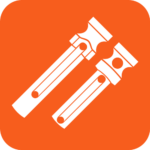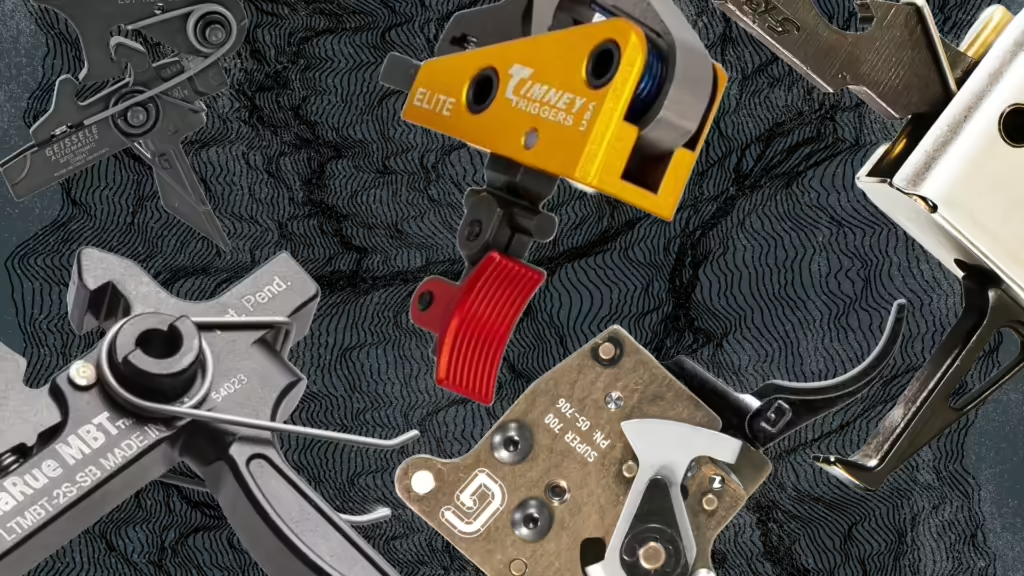
1 vs 2 Stage Triggers: REVIEW
When it comes to fine-tuning your AR-15 for specific applications, the trigger is one of the most critical components to consider. The type of trigger you choose can significantly impact both speed and precision. Two of the most popular options are the one-stage and two-stage triggers. Each offers unique advantages, and depending on your needs, one might stand out as the better option. In this post, we’ll explore the differences between the two and why many shooters favor two-stage triggers for control, while one-stage triggers shine when speed is the priority. Learn more about 1 vs 2 Stage Triggers in this review by Blain Oakes.
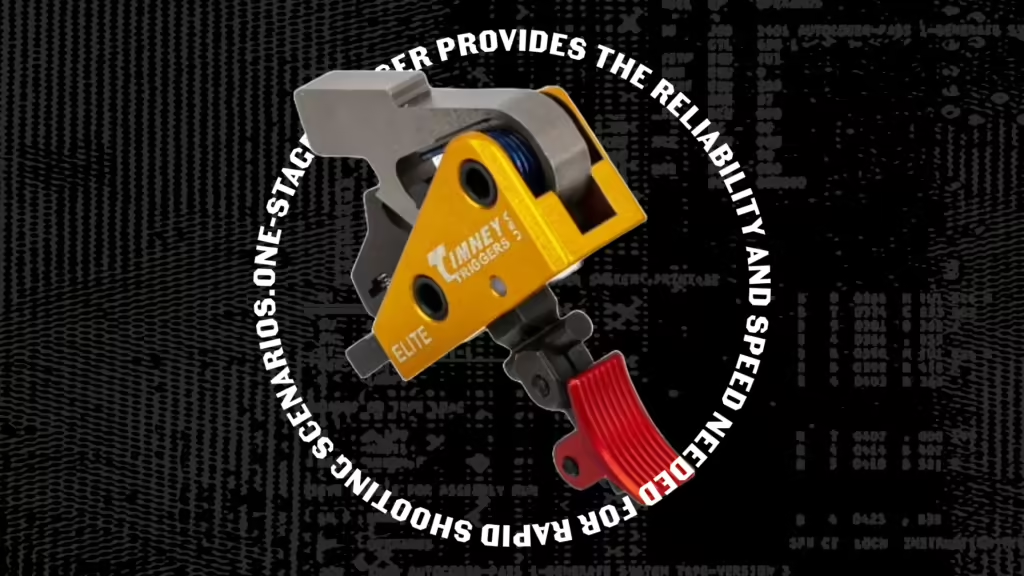
What is a One-Stage Trigger?
A one-stage trigger has a single, consistent pull from start to finish. There is no discernible transition before the trigger releases the hammer. The moment you begin applying pressure, you’re on your way to a shot. This type of trigger tends to be popular among shooters looking for simplicity and quick reaction times.
Advantages of a One-Stage Trigger:
Speed: The straightforward, uninterrupted pull allows for fast, decisive shots. If you’re engaged in high-speed competition shooting or tactical scenarios where every millisecond counts, a one-stage trigger can give you an edge.
Consistency: A good one-stage trigger offers a predictable, uniform break every time, allowing experienced shooters to know exactly when the shot will break.
Simplicity: With no take-up to manage, the learning curve for one-stage triggers is minimal. This makes it a go-to for shooters who prioritize a fast, no-nonsense approach to firing.
However, with speed comes the risk of sacrificing fine control. This is where the two-stage trigger comes in.
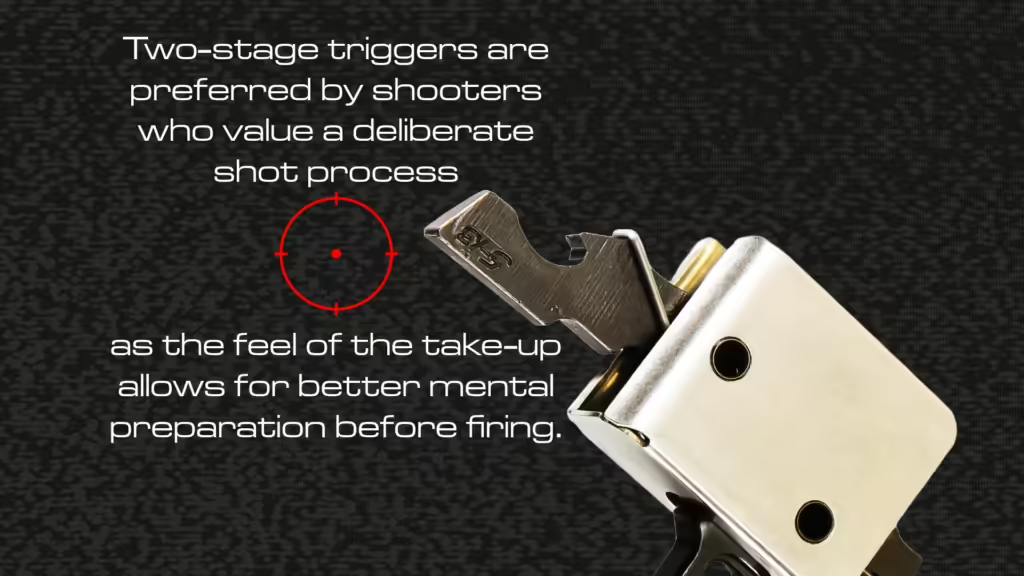
What is a Two-Stage Trigger?
A two-stage trigger offers a more deliberate firing process, consisting of two distinct phases. The first stage is a light, predictable “take-up,” where the trigger moves until you hit a point of resistance. The second stage is where the real magic happens — a crisp break that requires a bit more pressure to fire.
Advantages of a Two-Stage Trigger:
Control: The two-stage design gives shooters the ability to carefully manage each shot. You can easily pause after the first stage, ensuring that the trigger only breaks when you’re completely ready. This is crucial for precision shooting, whether you’re at the range or in a hunting scenario.
Reduced Error: The take-up in the first stage gives you the opportunity to confirm your aim before committing to the shot. This added layer of control helps prevent premature firing, reducing the chance of error in high-stress situations.
Confidence in Precision: When every shot matters — especially when taking long-distance or precision shots — the controlled feel of a two-stage trigger can be a game changer. It allows for a slower, more deliberate process, increasing accuracy and consistency.
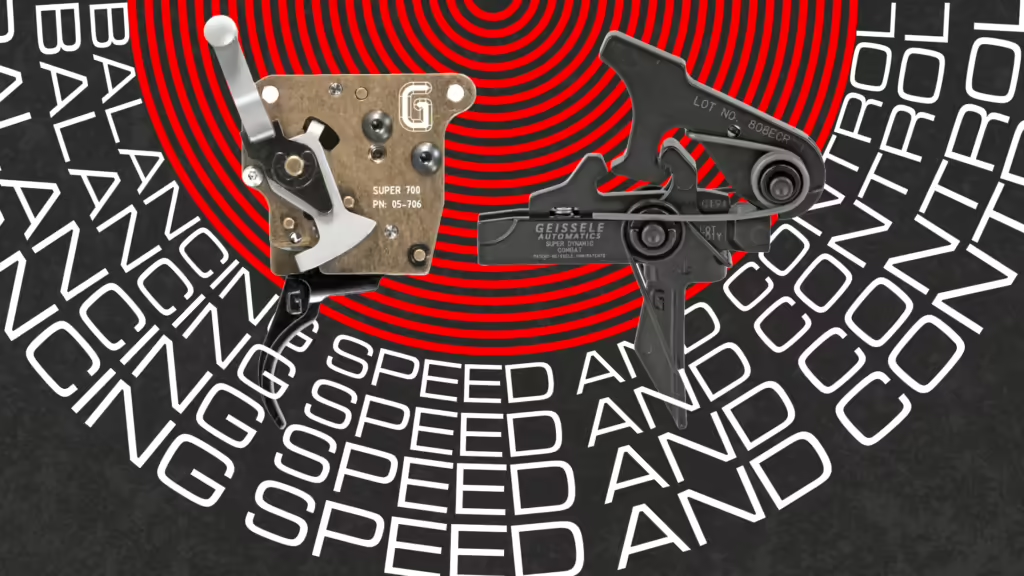
When to Choose a One-Stage Trigger
One-stage triggers excel when speed is the top priority. For competitive shooting, such as 3-Gun or tactical applications, where multiple fast follow-up shots are crucial, the quick, no-frills action of a one-stage trigger can make all the difference.
If you’re comfortable with a fast break and minimal margin for error, a one-stage trigger provides the reliability and speed needed for rapid shooting scenarios.
When to Choose a Two-Stage Trigger
Two-stage triggers shine when precision is paramount. For long-range shooting, hunting, or situations that require surgical accuracy, the extra control afforded by the first stage ensures you’re only pulling the trigger when everything is aligned perfectly. Additionally, two-stage triggers are preferred by shooters who value a deliberate shot process, as the feel of the take-up allows for better mental preparation before firing.
While two-stage triggers might not be as fast as their one-stage counterparts, their ability to fine-tune each shot often outweighs that for shooters focused on accuracy and control.
Balancing Speed and Control
For most shooters, the decision comes down to personal preference and intended use. If you’re focused on speed, a high-quality one-stage trigger can serve you well, especially in close-quarters shooting or high-speed competitions. But if you’re looking for control and precision, especially in stressful situations where each shot needs to count, a two-stage trigger might be worth the investment.
The beauty of modern AR-15 builds is that you’re not locked into one option. Many shooters find that owning rifles with both one-stage and two-stage triggers provides them the versatility they need for different shooting disciplines.

Conclusion: Finding the Right Trigger for You
Ultimately, your choice between a one-stage and two-stage trigger should come down to what you prioritize in your shooting style. If speed and simplicity are what you’re after, a one-stage trigger will deliver quick, clean shots. But if control and accuracy are your main concerns, the precision of a two-stage trigger is hard to beat.
Both triggers have their place, and understanding their strengths can help you make the best choice for your shooting needs.






